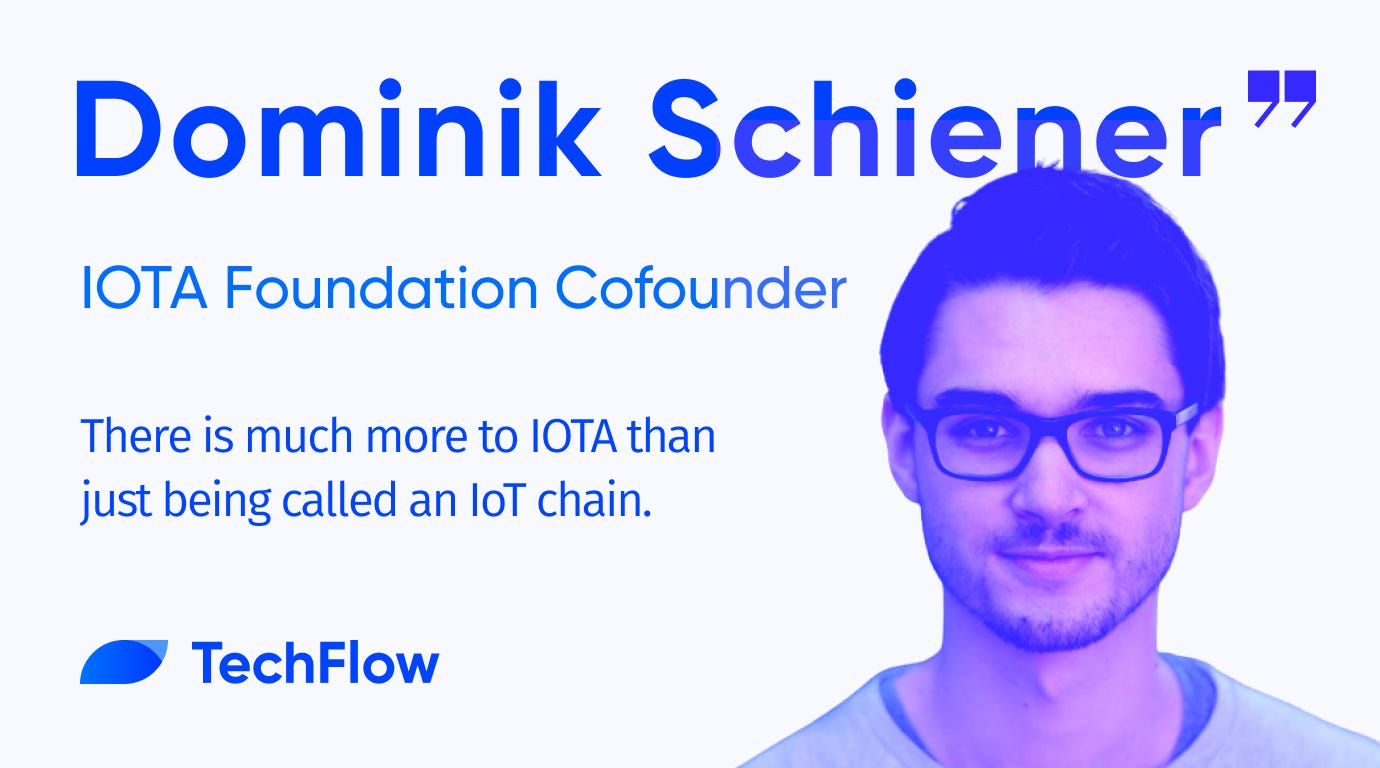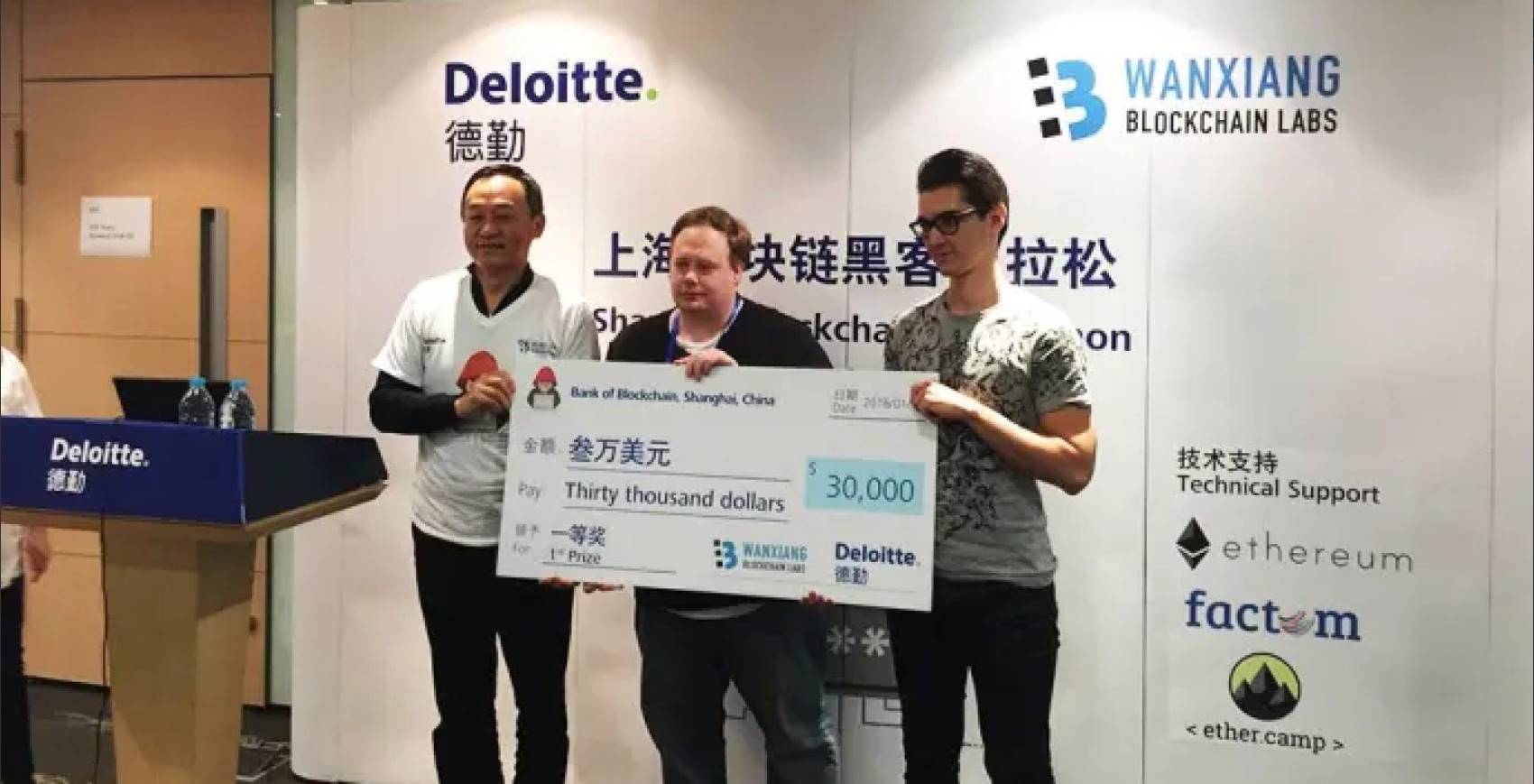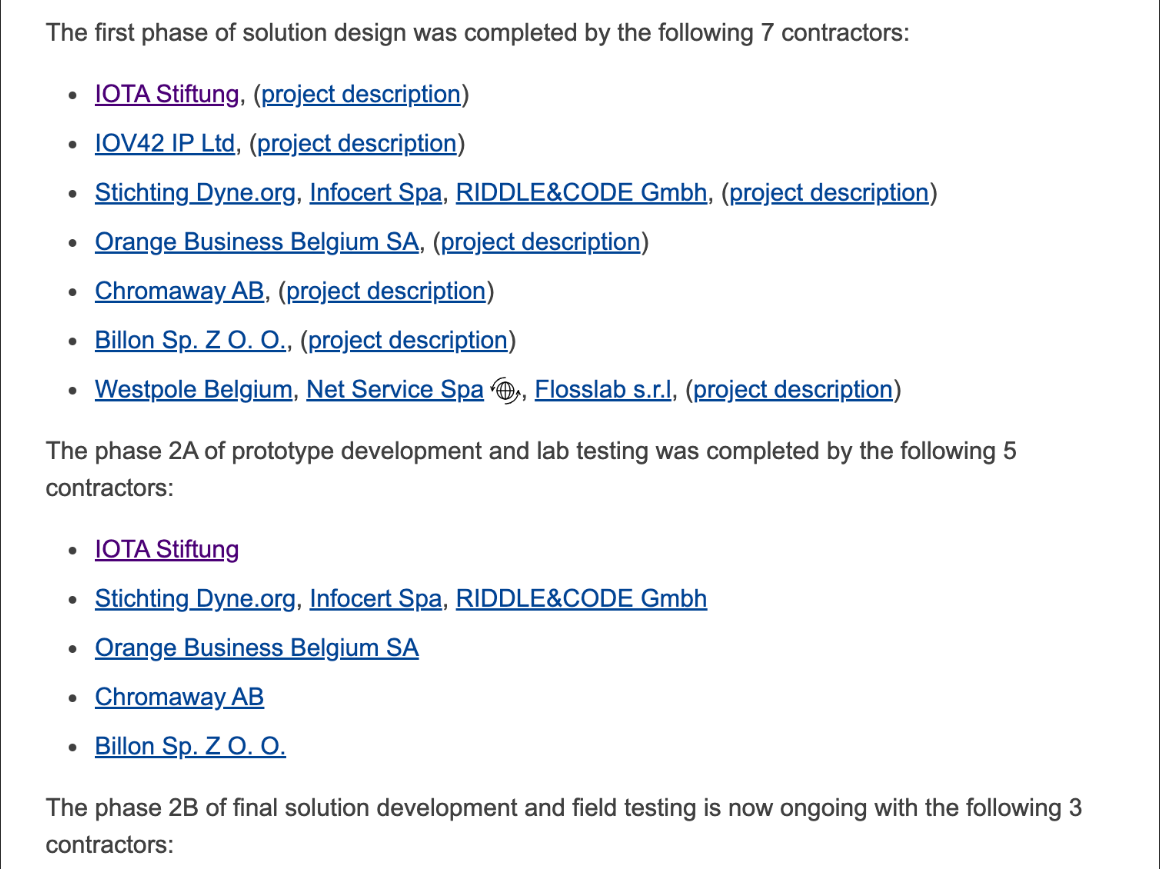
The Next Trillion Dollar Wave - AI Narrative in Crypto: Who Are the Top Players?
Dec 12, 2024 21:40
TechFlow: Sunny
IOTA: Dominik Schiener

"There is much more to IOTA than just being called an IoT chain."
--Dominik Schiener, Cofounder of IOTA Foundation
IOTA may seem unfamiliar to those who joined the crypto market during the last bull run. However, for those who were already involved before 2017, IOTA was once a highly anticipated "coin of a thousand times" that surged into the top ten on Coinmarketcap. It was positioned as a blockchain foundation for IoT, targeting large enterprises and governments.
At that time, IOTA faced criticism from MIT's Media Lab for its development of a "blockchain" without blocks and chains, and Hebrew University scholars in Israel described it as "IOTA is a currency I love to hate." TechCrunch journalists even wrote satirical articles about it, while the original founding team engaged in heated arguments on social media.
Controversial projects often grow amidst external criticism and pressure.
After a full market cycle, are the old projects still around? In a recent conversation with Dominik, the co-founder of IOTA, I learned that he has recently moved to UAE, where he is actively promoting the application of the IOTA 2.0 Layer 2 network and the on-chain representation of real-world assets. "We have overcome many negative factors, including our technology, some co-founders, and internal disputes," Dominik said.
When it comes to disputes, it's quite normal for members of various project teams to have conflicts. Ethereum founder Vitalik once revealed that the success of the Ethereum project was achieved by removing unsuitable employees and founders. It's important to believe in the correctness of the technology.
Returning stronger and with a fresh start, today's IOTA reflects on past mistakes in decision-making and technology. It has also repositioned itself as a universal chain compatible with Ethereum, rather than a blockchain project solely focused on IoT.
Seemingly following the trend of Layer 2 solutions, IOTA has ambitious goals: to build itself as a public chain that competes with Ethereum and pursues government and enterprise partnerships. IOTA is not only present in the Middle East but also established in the European Union and Africa. Through strong collaborations with governments, they strive to achieve their ultimate goal of "Digital Autonomy for All."
The following is a compilation of an interview between TechFlow journalists
TechFlow: What is your background and story about founding IOTA?
Dominik:
I've been involved in crypto since 2011 and working full-time in the industry since 2012. Initially, I started with mining and later had the desire to create a crypto exchange. I joined the Crypto Valley in Zurich to contribute to its development and regulatory-friendly environment. However, our efforts were unsuccessful. During the bear market of 2013-2014, I lost a significant amount of money. At that time, I was young, only 18, and heavily focused on crypto. My interest shifted towards Ethereum, and I built my skills through connections with Ethereum founders and my participation in the Wanxiang Blockchain Lab, where I won the biggest blockchain hackathon in 2016.

At the end of 2015, I helped co-found IOTA. The core premise of IOTA had two main aspects.
Firstly, we realized that blockchain itself had limitations in terms of scalability.
It faced issues with high transaction fees, energy consumption, and miner control over the network. We recognized the need to invent a new architecture that could overcome these limitations and move away from a single-threaded blockchain.
Instead, we aimed to create a multi-threaded architecture, similar to what happened with microprocessors. Rather than having just one core to execute transactions, our idea was to have multiple cores to process as many transactions as possible. This led to the birth of the tangle concept, and in 2015, we were the ones who invented this new architecture.
The second objective was to explore new use cases. Back then, blockchain was still a relatively new concept, and very few people knew about DeFi, NFTs, or tokenization. Everyone was exploring various possibilities in very big directions.
IOTA led the way in promoting blockchain adoption by collaborating with major companies, governments, and enterprises. To facilitate this, we established a German non-profit foundation and sought regulation. Our goal was to assist big companies in integrating IOTA and developing various use cases in sectors such as mobility, energy, trade and logistics, digital identity, smart government, and smart cities. In 2017, when blockchain adoption was minimal, IOTA stood out as a pioneer, showcasing the potential of technology.
TechFlow: What happened after 2017, after so many public criticisms against IOTA and its team?
Dominilk:
Then in 2018 to 2020 period, I would say we really, we're in a period of redefining what IOTA is really for and also removing some of the controversial parts of IOTA. For example, some of the cofounders, some of the drama surrounding IOTA.
For IOTA, we started with nothing,
We only raised half a million dollars during the ICO in 2015.
We didn't have a war chest like other projects because other projects took a large chunk of their token supply for themselves and then they had hundreds of millions of dollars to invest into marketing, into growth.
IOTA was really like a community project.
Every project, especially something like IOTA, which came from nothing and got very big. It means that a lot of money is involved in a lot of power.
So there's always differing opinions, especially among the founders because many of the founders didn't even have experience with big companies or big projects.
So they also sort of like first time founders. So it means that people change. If people change, there's always some conflict cuz everybody has an ego, but everybody has an incentive for this to go big.
And with that, there's also differing opinions. And so that's how their fights also start. The unfortunate thing about the IOTA in comparison to Ethereum that the drama spilled over into the public, because I know of a lot of the drama in this year as well, especially during the early days, but they (Ethereum) kept it private.
So with IOTA, they promise that they'd all became public and it was fought out in public. And that's why people associated IOTA with drama back in the day
That's why we needed to change that thing as well and make sure that we stay true to actually achieving our true goal with IOTA.
What we did then is obviously we repositioned IOTA in the market where we got rid of the bad stuff of it, of our order, including our technology, which was very difficult to use, but very cumbersome and you could, for example, only use it and address it once and stuff like that.
TechFlow: Therefore, how has IOTA changed from IOTA before?
Dominik:
Like when you think about IOTA today, you shouldn't just think about IOTA just being for the internet of things.
We also change the other bad things about IOTA like the board and getting rid of some of the founders of IOTA.
During 2020 to 2022, we focus on improving the protocol of IOTA so that is not just about IoT, so it's not just about enterprise use cases, but so that we also can actually have Defi and NFTs and have smart contracts, so that IOTA becomes EVM compatible.
In 2022, we introduced ShimmerEVM, the staging network of IOTA. It serves as a testing ground for the first product releases before they are deployed on the IOTA network. Recently, we released ShimmerEVM, a fully EVM compatible layer 2 network, which will soon be launched on IOTA. The evolution of IOTA has transformed it from a difficult-to-use chain in 2015 to a highly scalable network with one-second confirmation times and thousands of transactions per second (TPS). It is now also compatible with EVM, enabling the integration of DeFi and new use cases on IOTA and Shimmer.
Our next phase, IOTA 2.0, introduces a leaderless consensus algorithm, staking for network security, and a fully scalable and decentralized network. This major release is planned for early next year to establish full competitiveness against Ethereum. Additionally, we are working on introducing smart contracts on our layer one to enhance utility and shared security. Our technical roadmap is supported by a dedicated team of around 110 people at the IOTA Foundation, with extensive peer reviews and collaborations with prestigious institutions such as Imperial College and the University of Zurich.
Shimmer EVM has already attracted several major projects with a total value locked (TVL) of around 2.5 million. The network is still in the early stages of development and being bootstrapped. In the next phase, our focus will be on adding more bridges for liquidity and expanding the listing of Shimmer on additional exchanges.
TechFlow: Has IOTA's Business-to-Government strategy ever changed after its repositioning?
Dominik:
IOTA excels in real-world adoption and has been involved in projects such as building the European blockchain infrastructure and developing digital trade infrastructure and digital identities in Kenya.
Our focus is on positioning IOTA as the preferred ledger for digitizing trade and establishing transparent supply chains. Additionally, we are actively working on tokenization, starting with US Treasury bills and expanding to real estate and other securities. We believe this will attract new users and create new financial markets on the blockchain. Regulatory approval and collaboration with governments are crucial aspects of our strategy, and we have dedicated teams for regulatory affairs and partnerships with governments. While IoT is a significant part of our adoption, we have a broader scope and work on diverse use cases such as digital identities for humans and financial applications. Digital identity for machines and product passports are some of the primary IoT use cases we focus on currently.

TechFlow: What is your vision keeping you going all the years?
Dominik:
Trade finance is indeed an exciting use case, especially in terms of fostering financial inclusion. We aim to create liquidity pools that support farmers in countries like Kenya and Tanzania, enabling them to export their goods and obtain financing for their work. By leveraging blockchain technology and our capabilities, we can empower people and provide banking services to the unbanked. We are actively working on projects in this area, and it is a significant focus for us moving forward.
Reference:
Recommendation
Vana
Conversation Vana Founder - Anna Kazlauskas: From High School Dropout to Web3 Pioneer: How a Federal Reserve Intern is Reimagining Decentralized Data with Vana
Oct 10, 2024 11:37

Dialogue with Klaytn Foundation Director on Koreas Web3 Nautical Map
Jun 06, 2024 13:21

Conversation with TOKEN2049 Cofounder on what it takes to host a world-class crypto conference
Jun 06, 2024 12:04